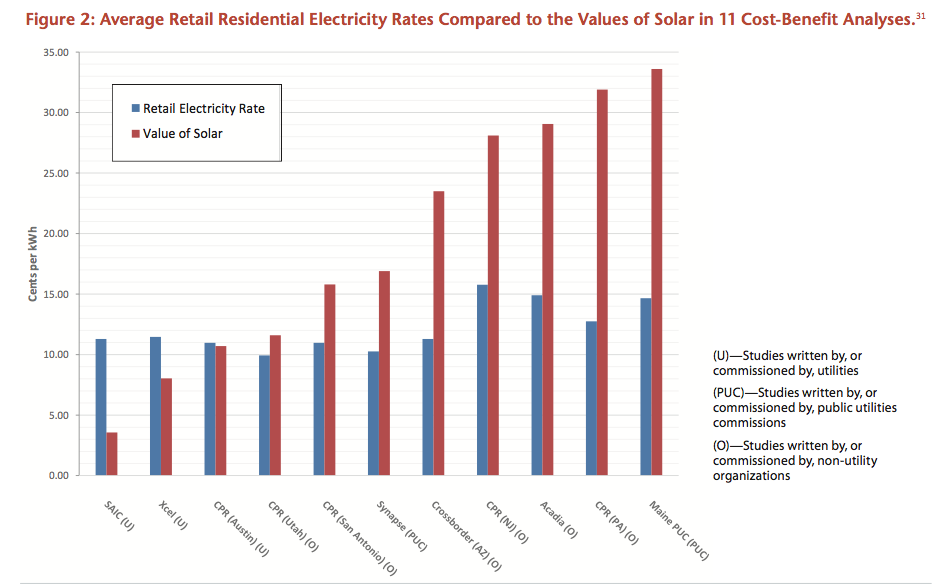Solar Net Metering A Subsidy To Utilities?
When Robert Nohavec of Park City, Utah; Jabbar Graham from Cherry Hill, New Jersey; and Don Born, of Waldoboro, Maine installed solar on their homes, they had something unexpected in common. They were all giving back to their electric company and their community. That’s because solar energy systems tend to provide more value to the electric grid and society than the solar producers are paid under net metering policy, confirmed by a new report released by Environment America.
The report responds to an ongoing battle between electric companies and their customers over the value of solar energy. It shows how utilities have—falsely—asserted that customers saving money with solar are costing them, and that instead solar customers have been providing benefits far beyond what they’re compensated for. The following chart illustrates, showing the relationship between the value of solar energy and the retail electricity rate (the price per kilowatt-hour solar customers receive for their solar energy). In every state where the value of solar was calculated by an independent entity, the value was greater than the utilities provided for solar energy.
The heart of the battle is described succinctly in the report:
Historically, the relationship between power generators and consumers had been a one-way street. Utilities generated the power and customers bought it. Utilities simply sent customers a monthly bill for the amount of power they consumed. Utilities were granted a franchise and exclusive monopoly to serve an area in return for a reasonable opportunity to make a profit. The price of power was set at a level designed to recover the utility’s cost of building and operating the power plants, power lines and distribution systems needed to supply electricity to consumers.
Technologies like solar panels, however, enable electricity consumers to also be electricity producers.
The value of solar studies provide solid evidence that the utility efforts to curtail net metering have less to do with protecting ratepayers and more to do with understanding the end of their natural monopoly over power generation.
Ultimately, states may have to step in to fix the archaic electric market. In Minnesota, for example, the state created a value of solar tariff as an alternative to net metering. In New York, regulators are pursuing and end to the monopoly of the electric company over the distribution grid. There’s still a raging debate about the best strategy to appropriately value solar. Some feel that net metering is sufficient, and others argue that it’s an antiquated policy that’s not reflective of the costs and benefits on the grid.
Whatever the policy, Environment America’s newest report suggests that a properly designed program to support customer-owned solar needs to reward its full value.
—
Want to weigh in?
Join ILSR’s Director of Democratic Energy and former Austin Energy executive and Executive Director of the Pace Energy and Climate Center Karl Rabago, for “Freedom to Generate: Alternatives to the ‘Value of Solar’ formula” on July 8, 2015.
This article originally posted at ilsr.org. For timely updates, follow John Farrell on Twitter or get the Democratic Energy weekly update.
Photo credit: Tim Fuller via Flickr (CC BY 2.0 license)
Have a tip for CleanTechnica? Want to advertise? Want to suggest a guest for our CleanTech Talk podcast? Contact us here.
Latest CleanTechnica.TV Video

CleanTechnica uses affiliate links. See our policy here.

